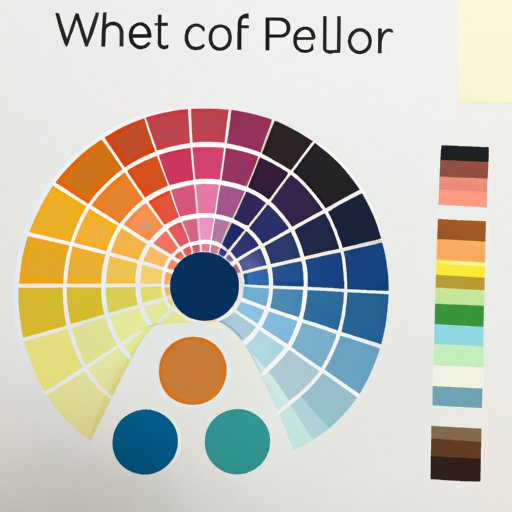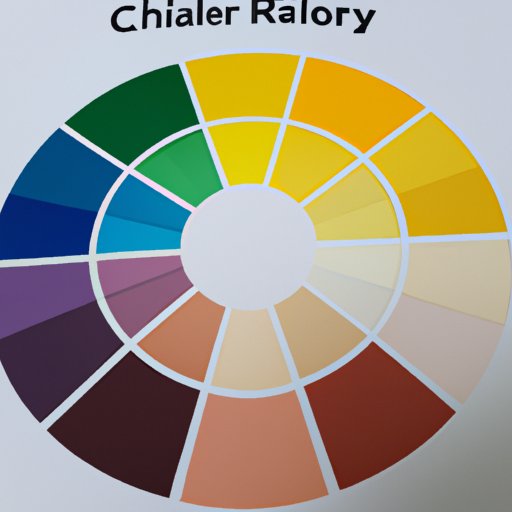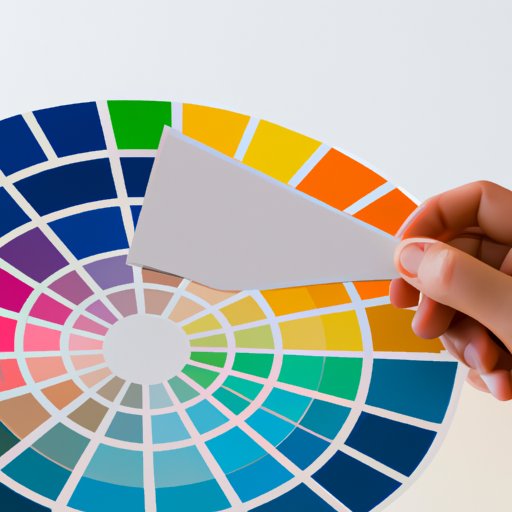Introduction
The color wheel is a tool used by artists, designers, and decorators to understand and create various color combinations. It visually displays the relationships between colors and helps people select and mix colors to achieve the desired effect. But what exactly is the color wheel, and how does it work?

Exploring the Components of the Color Wheel
The color wheel is made up of three main types of colors: primary, secondary, and tertiary. Primary colors are the base hues from which all other colors are derived. These include red, yellow, and blue. Secondary colors are created by combining two primary colors, such as orange (red + yellow), green (blue + yellow), and purple (red + blue). Tertiary colors are a combination of a primary color and a secondary color, such as yellow-orange, blue-green, and red-purple.
Understanding How the Color Wheel Works
The color wheel can be used to explore the principles of color mixing and color relationships. Colors that are opposite each other on the wheel are called complementary colors, and when mixed together they create a neutral gray. Adjacent colors on the wheel form analogous color schemes, which provide a harmonious look. Additionally, the color wheel can be used to identify monochromatic color schemes, which are composed of different shades and tints of one color.
Using the Color Wheel to Create Artistic Color Combinations
It’s easy to use the color wheel to create aesthetically pleasing color combinations for various art and design projects. Color harmonies are composed of several colors that are arranged in a way that creates a visually appealing effect. Some popular color harmonies include triadic, tetradic, split-complementary, and monochromatic. Color schemes are more specific arrangements of colors that are used to evoke certain emotions or moods. Examples of common color schemes include analogous, complementary, and contrasting.

Applying Color Theory Principles to the Color Wheel
The color wheel is based on the principles of color theory, which explores the properties of color such as hue, value, and saturation. Hue refers to the actual color, while value is the lightness or darkness of a color. Saturation describes the intensity of a color, with higher saturation indicating brighter and more vibrant colors.
Examining the Relationship Between Hue, Value, and Saturation on the Color Wheel
The relationship between hue, value, and saturation can be explored by looking at the color wheel. For example, you can adjust the value of a color by shifting it towards the center of the wheel, and you can adjust the saturation by shifting it away from the center. Additionally, you can create color intensity by adding more saturation to adjacent colors on the wheel.
Analyzing the Impact the Color Wheel Has in Design and Decoration
The color wheel is an invaluable tool for both interior design and graphic design. Designers use it to create cohesive and visually appealing color schemes for interiors and exterior spaces. Graphic designers also use it to create color combinations that are appropriate for their project, whether it’s a website, logo, or advertisement.

Investigating the Historical Development of the Color Wheel
The concept of the color wheel was first proposed by painter and theorist Johannes Itten in the early 20th century. He divided the wheel into 12 sections, with each section representing a different hue. Since then, the color wheel has been refined and expanded upon by other theorists who have added more colors and developed new color theories.
Conclusion
The color wheel is a powerful tool for understanding and manipulating color. By exploring its components and applications, we can gain a better understanding of how it works and how it can be used to create stunning color combinations. From its beginnings in color theory to its modern usage in design and decoration, the color wheel is an essential tool for any artist, designer, or decorator.
(Note: Is this article not meeting your expectations? Do you have knowledge or insights to share? Unlock new opportunities and expand your reach by joining our authors team. Click Registration to join us and share your expertise with our readers.)
